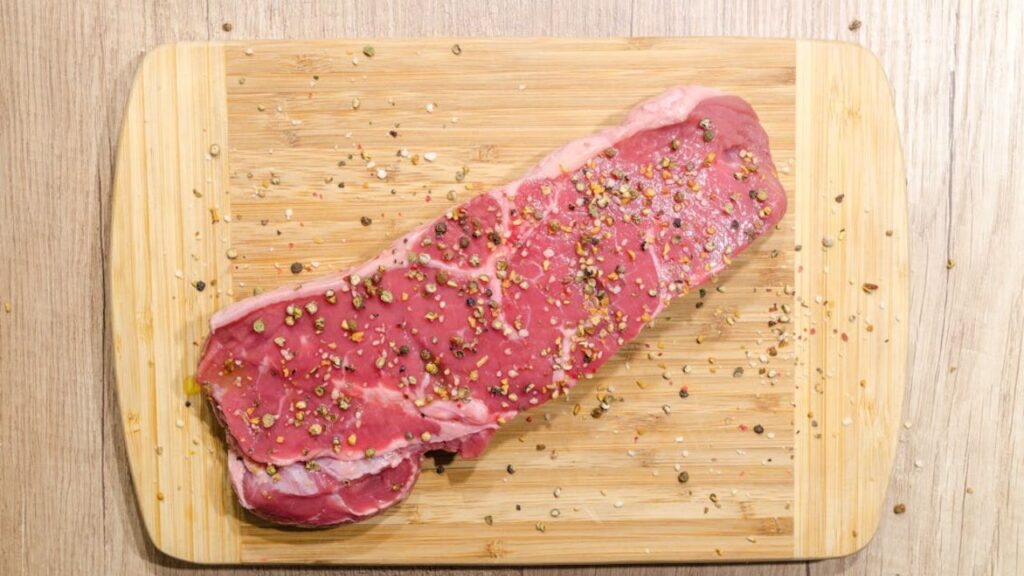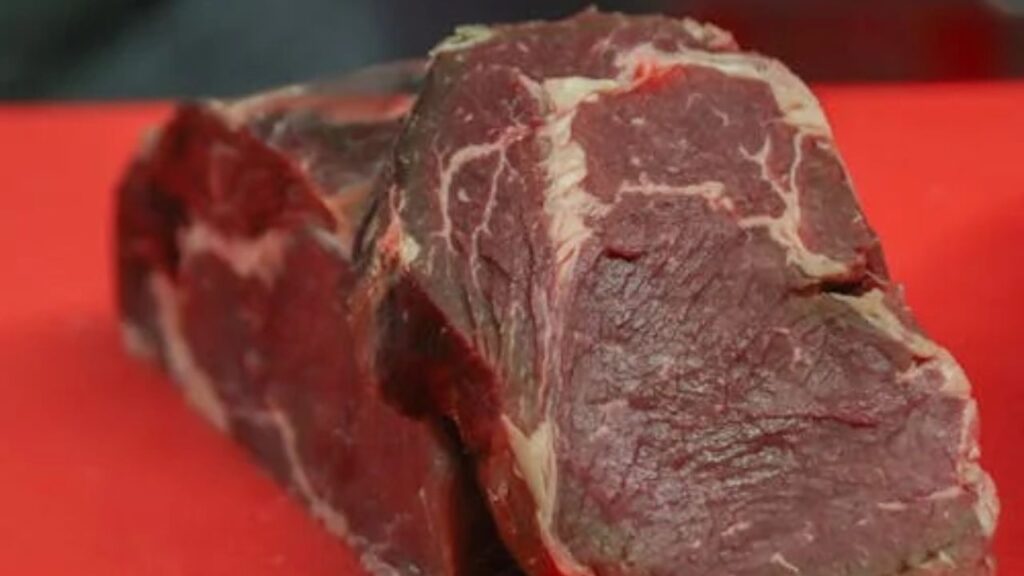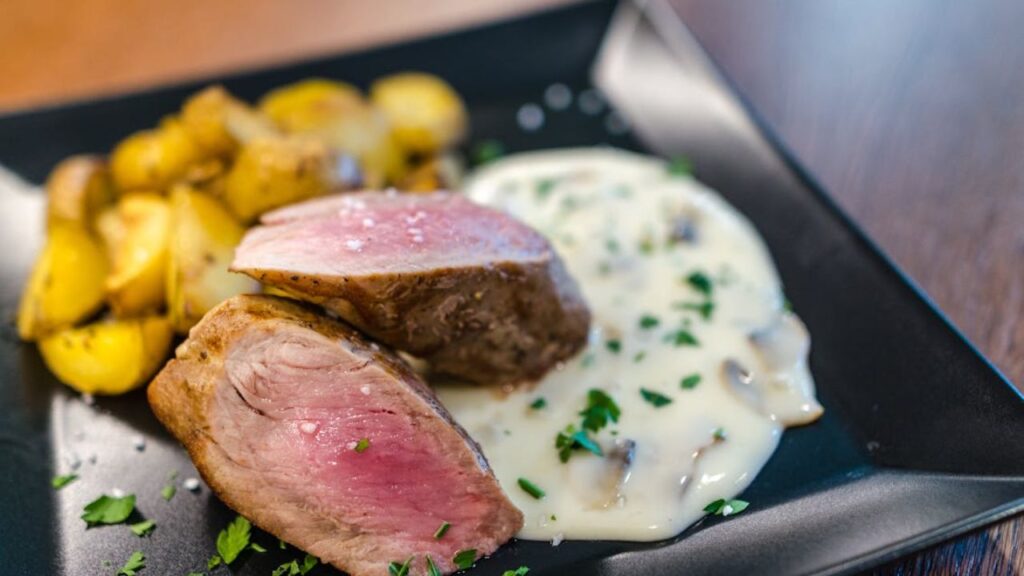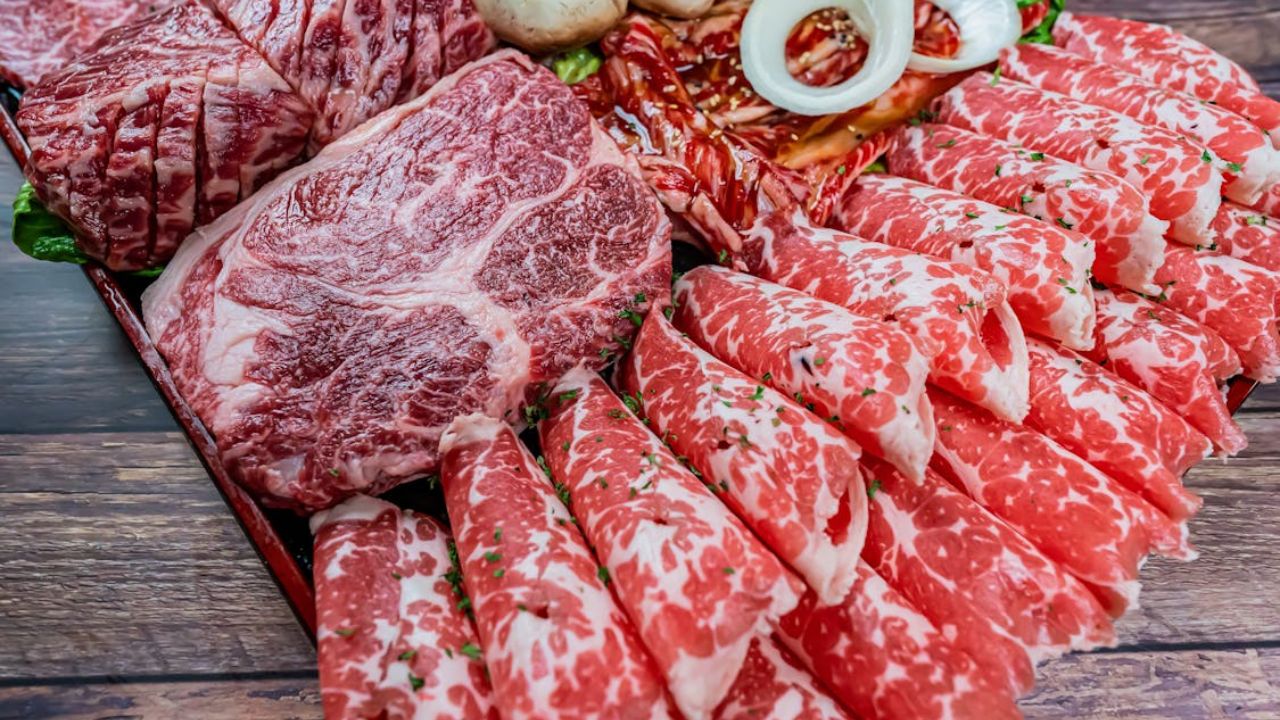Few choices are more reasonably priced and sensible for bulk meat purchases than choosing a side of beef. Whether your household is large, you appreciate premium meat, or you are a meal-prepper, knowing how to negotiate this procedure will save money and improve your cooking. Using basic, current guidance, this book will cover what you need to know about buying, preserving, and eating a side of beef.

What Is a Side of Beef?
A side of beef is half of a split lengthwise cow. This bulk buy covers ground beef and stew meat as well as steaks and roasts using a range of cuts. Purchasing a side of beef is like buying every bit of the animal broken down into sensible pieces. Usually processing the meat into vacuum-sealed containers, farmers or butchers render it freezer-ready. Compared to buying individual pieces from the grocery store, this method allows you to savor farm-fresh, premium beef at a reduced pound price. Furthermore, you will know exactly where your beef originates from, thereby benefiting openness and quality.
Benefits of Purchasing a Side of Beef
The purchase of beef has a number of benefits. First of all, bulk buying dramatically lowers the cost per pound. Second, you have a wide range of cuts that would be ideal for experimenting with fresh ideas or freezer stocking for several months. Third, you help nearby farms, therefore strengthening your community and guaranteeing moral agricultural methods. A side of beef also devoid of preservatives or additives sometimes seen in store-bought meats. Since bulk orders call for less materials than individually wrapped supermarket slices, you will also cut packaging waste. Families will have less supermarket trips and more time savoring home-cooked meals.
How to Choose the Right Side of Beef
Choosing a side of beef begins with identifying a reliable source. Search for positive-reviewed local farms, butchers, or meat processors. Inquire about the cow’s diet—grass-fed against grain-finished, living quarters, and processing techniques. Find out if the price covers processing costs; they might mount up. Select the meat cut; specify preferences for ground beef fat ratios (e.g., 80/20), steak thickness, or other needs including beef bones for broth. A good provider will guide you through these choices to ensure you get precisely what you want. Remember to first verify freezer space; side of beef calls for around 8 cubic feet of storage!
Breaking Down a Side of Beef: Cuts You’ll Receive
A typical side of beef consists of smaller retail cuts as well as “primal cuts” (big pieces such the chuck, rib, loin, and round). T-bone, sirloin, ribeye, pot roast, brisket, ground beef, and specialty products like short ribs or oxtail will be among the tender steaks you get. Your tastes will determine the specific breakdown. For slow-cooked recipes, for instance, you can ask for less ground beef and more stew meat. Knowing these cuts improves your food planning. Tenderloin is ideal for special events; tougher cuts like chuck shine in slow cookers. Not to worry; most companies include a cutting guide to assist you in making decisions.

Storing Your Side of Beef: Tips for Freshness
Maintaining freshness of your meat depends mostly on proper storage. In a freezer set at 0°F (-18°C), vacuum-sealed chops keep for up to 12 months. Sort packages according to cut type and date to prevent “freezer burnout,” or ice crystals that compromise texture. For extra defense, use freezer bags or sealed containers. Refrigerate thawed meat for short-term storage and utilize it for three to five days. If space permits, think about making a stand-alone freezer investment. To keep you orderly, label every packet with the cut name and date. Rotate older slices to the front of the freezer to use first.
Cost Analysis: Is a Side of Beef Worth It?
Although the upfront cost of a side of beef might appear high (typically 1,000–1,000–2,500, depending on region and quality), it is generally less per pound than retail pricing. For instance, if a side weighs 300 pounds and costs 1,800, that is around 1,800—far less than the $12+/lb you would pay for excellent steaks separately. Consider savings from not shopping at last-minute takeout and supermarket mark-ups. Since every bit of the animal is used, you will also waste less meat. This investment pays off over time, particularly for homes that consume beef often.
Cooking Tips for Different Cuts of Beef
Cooking a side of beef forces one to be creative with several cuts. For fast dinners, pan-sear or grill steaks (ribeye, strip) to medium-rare Slow cooking helps tough meats like chuck roast or brisket; think of Instant Pot stews or oven-braised foods. Ground beef is flexible; use it in meat sauces, tacos, or burgers. Ignorance of “lesser” cutbacks is unacceptable! Shank cooks rich broth, and smoked short ribs are melt-in-your-mouth delicious. To keep meals interesting, play with dry rubs, marinades, and cosmopolitan tastes (Korean bulgogi, Mexican carne asada).
Sustainability and Ethical Considerations
Purchasing a side of beef fits with sustainable eating provided it is acquired ethically. Regenerative agriculture—which enhances soil quality and lowers carbon footprints—is sometimes given first priority at local farms. Choosing grass-fed meat lessens dependency on industrial farming and helps animal welfare. Using the animal whole—from nose to tail—also reduces waste. If you care about the environment, ask suppliers about their policies. Many small farms apply energy-efficient processing techniques and biodegradable packaging, so your purchase is even more environmentally friendly.

Where to Buy a Side of Beef
Search local ranches or butcher stores first online. Direct connection with producers may be found in farmers’ markets and community-supported agriculture (CSA) projects. Websites such as Local Harvest or Eatwild offer lists of ethical vendors. A few even provide choices for delivery or pickup. Read client reviews and get recommendations before you commit. Though pricing may be more than local suppliers, online meat subscriptions like ButcherBox or Crowd Cow also sell bulk beef for convenience.
Side of Beef vs. Store-Bought Beef
| Factor | Side of Beef 🥩 | Store-Bought Beef 🛒 |
| Cost | Lower price per pound (bulk discount). Upfront cost stings, but long-term savings add up. | Higher price per pound (premium for convenience). Sales help, but markups on specialty cuts. |
| Quality | Farm-to-table freshness. No additives or preservatives. Know the cow’s diet and source. | Mixed quality. Often includes preservatives. Source transparency varies by brand. |
| Convenience | Requires freezer space (8+ cubic feet) and meal planning. | Grab-and-go. No prep needed, but frequent grocery trips required. |
| Variety | Get every cut (steaks, roasts, ground beef, bones). Customize to your taste. | Limited to what’s in stock. Rare cuts (e.g., oxtail) may be hard to find. |
| Sustainability | Supports local farms. Reduces packaging waste. Uses the whole animal (nose-to-tail). | Often sourced from industrial farms. More plastic packaging per cut. |
Conclusion
Anyone trying to cut costs, consume good meat, and minimize their environmental effect should definitely choose the side of beef. You will maximize this bulk buy if you know what to expect and how to get ready. From rich soups to tender steaks, having a freezer filled with beef guarantees the availability of great cuisine. All set to leap right in? Get in touch with a nearby farmer right now; you never look at grocery store meat the same way once more!
FAQ’s
1. Can I split a side of beef with a friend or neighbor?
True! Many divide a side of beef to save cash and freezer space. Share the chops fairly amongst you by working with your farmer or butcher.
2. What if I don’t like certain cuts (like organ meats or bones)?
Most allow you to personalize your order. Just ask them to replace ground beef or stew meat for cuts you won’t be using or eliminate them.
3. How do I thaw frozen beef safely?
Chill meat instantaneously in the freezer or use the defrost setting on your microwave. Steer clear of leaving it on the counter as bacterial development may result.
4. Is grass-fed beef better than grain-fed?
Although grain-fed beef is frequently more marbled—fattier—beef grown on grass is leaner and richer in some nutrients. Select depending on nutritional objectives and taste preferences.
5. What if I run out of freezer space unexpectedly?
If space is limited, think about giving extra meat to local food banks, friends, or family. To simplify storage problems, several farms also provide staggered collection dates.
